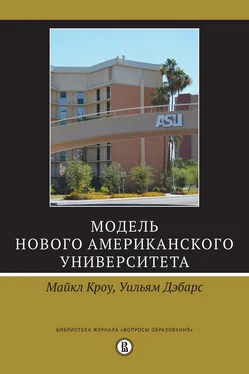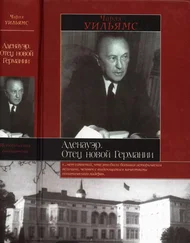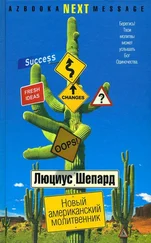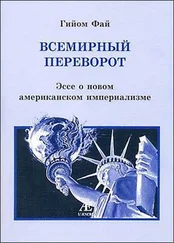Bloom A. The Closing of the American Mind. N.Y.: Simon and Schuster, 2012.
Роре J.W.; цит. по: Meyer J. State for Sale // New Yorker. 2011. October 10. P. 100–102.
Wood P, Toscano M. What Does Bowdoin Teach? How a Contemporary Liberal Arts College Shapes Students. N.Y.: National Association of Scholars, 2013. P. 16. Фраза о «нравственной ущербности» взята из предисловия к докладу Уильяма Беннетта. Цитата о догмате приводилась Дэном Берреттом: Bowdoin College Suffers from Moral Deficit, Report Argues // Chronicle of Higher Education. 2013. April 3.
Murray Ch. Narrowing the Class Divide // New York Times. 2012. March 7.
“Too Many Kids Go to College.” Intelligence Squared (IQ2) debate series. Chicago. 2011. October 12. .
Christensen C.M., Eyring H.J. The Innovative University: Changing the DNA of Higher Education from the Inside Out. San Francisco: Jossey-Bass, 2011. P. 12–13. Кристенсен излагает теорию подрывных инноваций в работе: The Innovator’s Dilemma. Cambridge, MA: Harvard Business School Press, 1997.
Christensen С.М. et al. Disrupting College: How Disruptive Innovation Can Deliver Quality and Affordability to Postsecondary Education. Washington, DC: Center for American Progress. 2011. February. P. 3.
Goldin C., Katz L.F. The Race between Education and Technology. Cambridge, MA: Belknap Press of Harvard University Press, 2008. P. 11–43.
Duderstadt J.J. A University for the Twenty-First Century. Ann Arbor: University of Michigan Press, 2000. P. 13–14.
Duderstadt J.J. “Aligning American Higher Education with a Twenty-First Century Public Agenda,” remarks to the Association of Governing Boards of Universities and Colleges / Miller Center for Public Affairs. Charlottesville: University of Virginia, 2008. June 8-10.
Rhodes F.T. The Creation of the Future: The Role of the American University. Cornell University Press, 2001. P. 230–231.
Gee G. Colleges Face Reinvention or Extinction // Chronicle of Higher Education. 2009. February. P. 9.
John V. Lombardi, How Universities Work. Baltimore: Johns Hopkins University Press, 2013. P. 30–31.
Goldin С., Katz L.F. The Race between Education and Technology. P. 11–43.
Carnevale A.P.; цит no: Edsall T.B. The Reproduction of Privilege // New York Times. 2012. March 12.
Graham H.D., Diamond N. The Rise of American Research Universities: Elites and Challengers in the Postwar Era. Baltimore: Johns Hopkins University Press, 1997.
Leslie S.W. The Cold War and American Science: The Military Industrial Academic Complex at MIT and Stanford. N.Y.: Columbia University Press, 1993. P.2.
Clark W. Academic Charisma and the Origins of the Research University. Chicago: University of Chicago Press, 2006 (рус. пер.: Кларк У. Академическая харизма и истоки исследовательского университета. М.: Изд. дом ВШЭ, 2017).
DiMaggio P.J., Powell W.W. The Iron Cage Revisited: Institutional Isomorphism and Collective Rationality in Organizational Fields // American Sociological Review. 1983. Vol. 48. No. 2. P. 149.
Тота J.D. Institutional Strategy: Positioning for Prestige//The Organization of Higher Education: Managing Colleges for a New Era / ed. by M.N. Bastedo. Baltimore: Johns Hopkins University Press, 2012. P. 119.
Классическое исследование бюрократии представлено в работе: Downs А. Inside Bureaucracy. Boston: Little Brown, 1967.
Theil S. The Campus of the Future: To Better Compete, A Few Bold Leaders Are Rethinking Their Schools from the Ground Up // Newsweek. 2008. August 9.
The University of the Future // Nature. 2007. Vol. 446. April 26. No. 7139.
Rhodes F.; цит. по: Macilwain С. The Arizona Experiment // Nature. 2007. Vol. 446. April 26. No. 7139.
Rosenberg N Nelson R.R. American Universities and Technical Advance in Industry//Research Policy. 1994. Vol. 23. No. 3. P. 323–348.
Crow M.M., Dabars W.B. University-Based Research and Economic Development: The Morrill Act and the Emergence of the American Research University//Precipice or Crossroads: Where America’s Great Public Universities Stand and Where They Are Going Midway through Their Second Century / ed. by D.M. Fogel. Albany: State University of New York Press, 2012. P. 119–158.
Конечно, есть и более детальные и точные схемы развития американского высшего образования. Так, Роджер Гейгер выявляет десять поколений, «в каждом из которых, или приблизительно в каждые тридцать лет», характер американского высшего образования «ощутимо менялся». См.: Geiger R. The Ten Generations of American Higher Education // Higher Education in the Twenty-First Century: Social, Political, and Economic Challenges. 3rd ed. / ed. by Ph.G. Altbach, PJ. Gumport, R.O. Berdahl. Baltimore: Johns Hopkins University Press, 2011. P. 37–68.
Rhodes F. The Creation of the Future: The Role of the American University. Ithaca, NY: Cornell University Press, 2001. P. xi.
Geiger R.L. То Advance Knowledge: The Growth of American Research Universities, 1900–1940. Oxford: Oxford University Press, 1986. P. 2–3.
Kerr C. The Uses of the University. 5th ed. [1963]. Cambridge, MA: Harvard University Press, 2001. P. 1.
Cole J.R. The Great American University: Its Rise to Preeminence, Its Indispensable National Role, and Why It Must Be Protected. N.Y.: Public Affairs, 2009. P. 2. Далее, особенно в гл. 4, мы еще вернемся к материалам этого важного обзора.
Chinese Ivy League // China Daily. 2009. October 21. См. также: Rhoads R.A. et al. China’s Rising Research Universities: A New Era of Global Ambition. Baltimore: Johns Hopkins University Press, 2014.
В целом об американском исследовательском университете в сравнительном аспекте см.: Crow M.M., Dabars W.B. Knowledge without Borders: American Research Universities in a Global Context// Cairo Review of Global Affairs. 2012. Vol. 5. Spring. P. 35–45.
Читать дальше
Конец ознакомительного отрывка
Купить книгу










